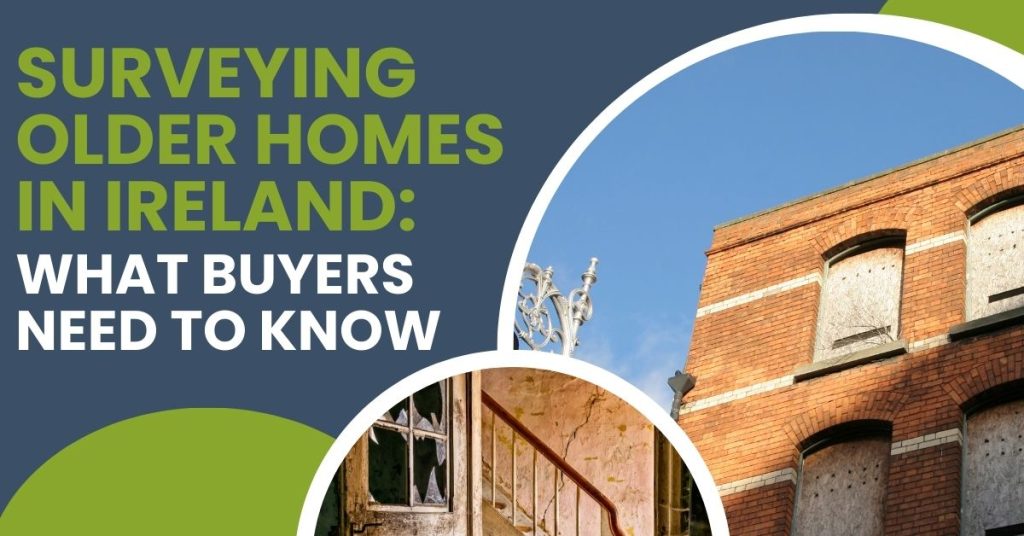
Considering a charming period home in Cork or Galway? Here’s what a surveyor looks for, and what you should expect.
Ireland’s older homes are full of character; original fireplaces, sash windows, timber floors and high ceilings. Whether it’s a Victorian townhouse in Cork or a stone cottage near Galway Bay, these properties are appealing for their history and style.
But with age comes hidden risk. Older buildings weren’t built to modern standards and many come with surprises that only a detailed survey can uncover.
Here’s what every buyer should know before signing the dotted line on an older Irish home.
Rising damp and poor drainage
Many pre-1950s homes in Ireland lack damp-proof courses or modern drainage systems. Combine that with the wet Irish climate, and you’ve got a recipe for damp.
What to look for:
- Musty smells, salt staining or peeling paint on ground-floor walls
- Floors that feel “bouncy” or uneven
- Moss or algae on external walls near the ground
Surveyor’s advice: We use moisture meters and visual inspections to check for hidden damp, including what may be under laminate flooring or fresh paint.
Lack of insulation and energy efficiency
Older homes were built to breathe, not to be airtight. Many still have single-glazed windows, uninsulated walls, and draughty chimneys.
Why it matters: You’ll pay more to heat the home and still feel the cold.
Surveyor’s advice: We identify upgrade opportunities, from attic insulation to secondary glazing, that can improve comfort without compromising the building’s heritage.
Structural movement or cracks
Shifting ground, ageing materials and years of weathering often show up as cracks in walls or ceilings.
What’s normal vs concerning?
- Hairline plaster cracks can be cosmetic
- Wider cracks (especially on external walls or near windows/doors) may indicate movement or settlement
Surveyor’s advice: We assess the size, direction, and location of cracks to determine if structural intervention is needed and whether a structural engineer should be consulted.
Timber rot and woodworm
Old roof timbers, floorboards, or attic structures can be vulnerable to wood-boring insects or fungal decay.
Warning signs:
- Small holes or powdery wood dust
- Soft floorboards underfoot
- Visible fungal growth in attics or behind skirting boards
Surveyor’s advice: We’ll flag areas needing specialist timber treatment and assess whether decay is active or historic.
Outdated electrics and plumbing
Many older homes in Cork and Galway still have 1970s or earlier wiring, which may not meet modern safety standards. Plumbing systems may also be inefficient, lead-based, or poorly routed.
Surveyor’s advice: While we don’t carry out full electrical or plumbing inspections, we flag signs that these systems need professional review (like outdated fuse boards or lead pipes).
Bonus: Planning compliance and modifications
Extensions, attic conversions, or alterations over the decades may not have been done with full planning permission or in line with building regulations.
Surveyor’s advice: We flag any irregularities or missing certifications, so your solicitor can follow up, especially important for properties with unregistered renovations.
Should you avoid older homes? Absolutely not.
Older homes are often built with solid materials and great craftsmanship. But they need to be properly understood and maintained. A detailed pre-purchase survey can save you thousands and help you avoid buying into a money pit.
Buying a period property in Cork or Galway?
Make sure you know what you’re buying, book your pre-purchase survey today with a local expert.
